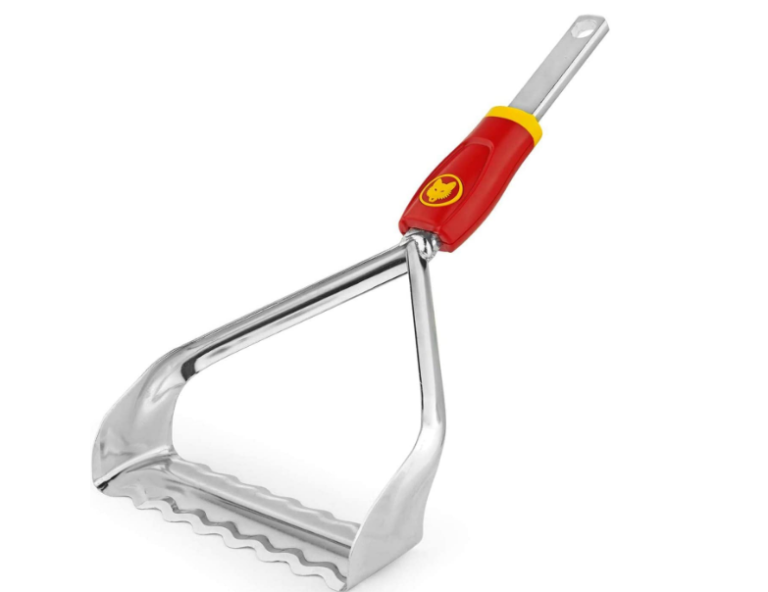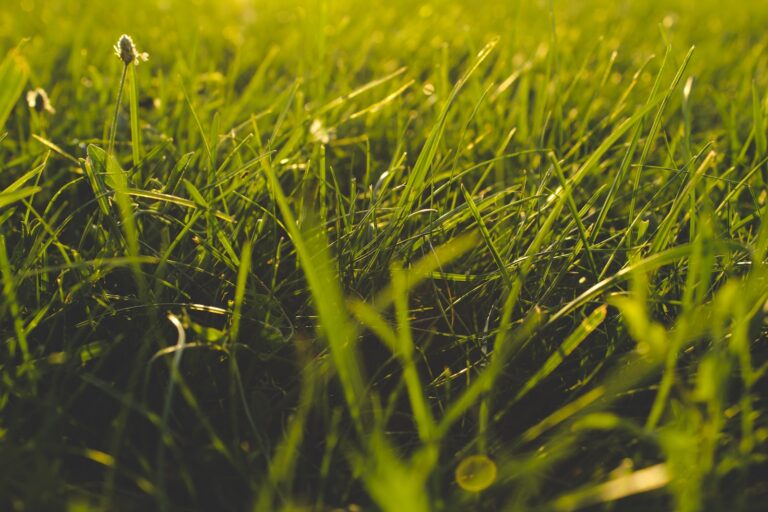Reasons Why Lawn Aeration is Essential for a Healthy Yard?

Do you want a lush, vibrant lawn that commands attention and makes your neighbors green with envy? If so, it’s time to consider lawn aeration! This simple but highly effective process is essential for promoting healthy soil, encouraging deeper root growth, and revitalizing your grass from the roots up.
But what exactly is lawn aeration, and why should you invest in this important service? In this blog post, we’ll explore the many benefits of aerating your lawn – from improved water retention to reduced soil compaction – and show you how easy it can be to achieve the gorgeous yard of your dreams. So grab a cup of coffee (or lemonade!), sit back, and let’s dive in!
What is Lawn Aeration?
Lawn aeration is the process of making small holes in your lawn to allow air, water and nutrients to reach the roots of your grass. This helps to promote a healthy lawn by improving drainage, preventing compaction and encouraging new growth.
There are many reasons why lawn aeration is essential for a healthy yard. Perhaps the most important reason is that it helps to improve drainage. When soils become compacted, it can be difficult for water to penetrate down to the roots of your grass. This can lead to problems such as puddling, waterlogging and even flooding. Lawn aeration helps to alleviate these problems by allowing water to drain more easily through the soil.
Another important reason for lawn aeration is that it helps to prevent compaction. Soil compaction occurs when the soil particles are pressed together, making it difficult for air and water to move through the soil. This can cause problems such as yellowing grass, thinning turf and bare patches. Lawn aeration helps to reduce compaction by breaking up the soil so that air and water can move more freely through it.
Finally, lawn aeration also encourages new growth. When the roots of your grass are exposed to more air, they are able to grow more vigorously. This results in a healthier, thicker lawn that is better able to withstand pests and diseases.
Benefits of Aerating Your Lawn
Aerating your lawn has many benefits that can help to keep your yard healthy. Aeration allows water, air, and nutrients to reach the roots of your grass, which helps promote a healthy root system.
This in turn helps your grass to better withstand drought conditions and resist disease and pests. Aeration also helps to reduce compaction of the soil, which can improve drainage and help prevent problems such as puddling and runoff.
Aerating your lawn is one of the most important things you can do to maintain a healthy yard. Here are some of the benefits of aeration:
- Aeration helps to improve drainage and prevents waterlogging.
- Aerating your lawn allows air, water, and nutrients to reach the roots of your grass more easily
- overseeding, which is essential for a lush, green lawn.
- Aeration also helps reduce thatch buildup and makes it easier for your lawn to resist disease and pests.
Tools for Aerating Your Lawn
There are many different ways that you can aerate your lawn. You can do it by hand using a garden fork or an aeration tool, or you can use a machine such as a power Aerator. Whichever method you choose, lawn aeration is essential for a healthy yard.
One of the reasons why lawn aeration is so important is because it helps to improve drainage. If your soil is compacted, then water will not be able to drain away properly and your lawn will become waterlogged. This can lead to all sorts of problems including moss, fungi and even flooding. Aerating your lawn will help to loosen up the soil and improve drainage.
Another reason for aerating your lawn is to encourage healthy growth. If the roots of your grass are unable to penetrate the soil properly, then they will not be able to access all of the nutrients that they need. This can lead to a patchy, unhealthy lawn. Aerating your lawn will help to create holes in the soil which will allow the roots of your grass to grow deeper and stronger, resulting in a healthier lawn.
Finally, aerating your lawn will also help to reduce thatch build-up. Thatch is a layer of dead organic matter (such as leaves and twigs) which can build up on top of your soil surface. If there is too much thatch, it can prevent water and air from getting into the soil and roots, leading to an unhealthy yard.
Types of Aeration Methods
There are two main types of lawn aeration methods: mechanical and manual.
Mechanical aeration is when you use a machine to puncture holes in your lawn. This is the most common type of aeration and usually the most effective. It’s also the most expensive and labor-intensive method.
Manual aeration is when you use your own body weight to push a spikes through the grass. This method is less expensive than mechanical aeration, but it’s also less effective.
Things to Consider Before Aerating Your Lawn
When it comes to lawn care, aeration is often seen as an optional extras. However, if you want to ensure your lawn is healthy and looking its best, aeration should be an essential part of your routine. Here are a few things to consider before you start aerating your lawn:
- The time of year: Aeration is best carried out in the fall or spring, when the grass is actively growing. Avoid doing it in the summer, when the heat can stress the grass, or in the winter, when the soil is likely to be too wet and compacted.
- The condition of your lawn: If your lawn is already in good condition, with a consistent growth pattern and no obvious bare patches, then it shouldn’t need as much aeration as one that’s struggling. Always assess your lawn before starting any work on it.
- The type of soil: Different soils will benefit from different types of aeration. Loamy soils – which are common in gardens – hold moisture and nutrients well and don’t require as much aeration as sandy soils. That said, all soils can benefit from some form of aeration from time to time.
- The equipment you’ll need: For small lawns, a garden fork or spading fork will do the job nicely. Larger lawns will require a mechanical aerator, which can be hired from most garden centers or tool hire shops.
By considering these points before you start aerating your lawn, you can make sure that the task is done effectively and efficiently, and that your lawn gets the best possible results.
Preparations for Aerating a Lawn
When preparing to aerate your lawn, the first step is to identify whether your lawn would benefit from aeration. This can usually be determined by examining the thatch layer and soil compaction. If the thatch layer is thicker than 1/2 inch or if the soil is compacted, aeration can help improve your lawn’s health.
The next step is to mark out any areas where you do not want holes punched into the ground. This includes any areas withseptic tanks, sprinkler heads, or underground utility lines. Once these areas are identified, you are ready to begin aerating.
There are two main ways to aerate your lawn: with a manual or motorized core aerator. A manual core aerator looks like a garden fork with tines that are slightly spaced out. To use this type of aerator, simply push it into the ground and twist it back and forth to create small cores of soil that will be left on top of the ground.
A motorized core aerator is a machine that pulls small cores of soil from the ground as you push it across your lawn. These cores of soil are then left on top of the ground where they will eventually break down and improve the health of your lawn.
Whichever type of aerator you choose, be sure to evenly space out the holes over your entire lawn area. Typically, 10-15 holes per square foot is sufficient for most yards. And finally, water the lawn generously after aeration to help the soil settle and promote healthy grass growth.
How to Proceed After Aeration
If you want your lawn to be healthy, it is important to aerate it on a regular basis. Aeration helps to loosen up the soil and allows air, water, and nutrients to reach the roots of the grass. It also helps reduce thatch buildup and encourages healthy microbial activity in the soil.
After you have aerated your lawn, it is important to take some time to care for it properly. Here are some tips on how to proceed after aeration:
-Water your lawn deeply and regularly. This will help the newly exposed roots grow strong and lush.
-Fertilize your lawn according to its needs. A soil test can help you determine what type of fertilizer will work best for your lawn.
-Mow your lawn regularly and at the proper height. This will ensure that your grass is getting the light it needs to photosynthesize properly.
By following these simple tips, you can ensure that your lawn remains healthy and green for years to come!
Conclusion
In conclusion, lawn aeration is an important part of keeping your yard healthy. Aerating can help alleviate soil compaction and improve water drainage, air circulation and nutrient absorption.
Additionally, it can help reduce the presence of weeds and pests. With these benefits in mind, it’s worth considering if lawn aeration is necessary for your property to maintain a lush lawn that you can be proud of.

James is a passionate writer and gardener with years of experience in home gardening. He is the author of several articles and blog posts on HomeGardenBlog.com, a platform where he shares his expertise and love for plants and gardening with the world.







